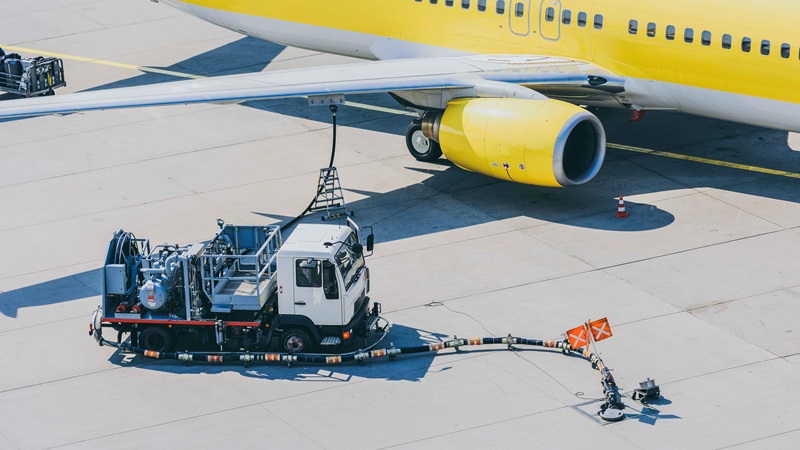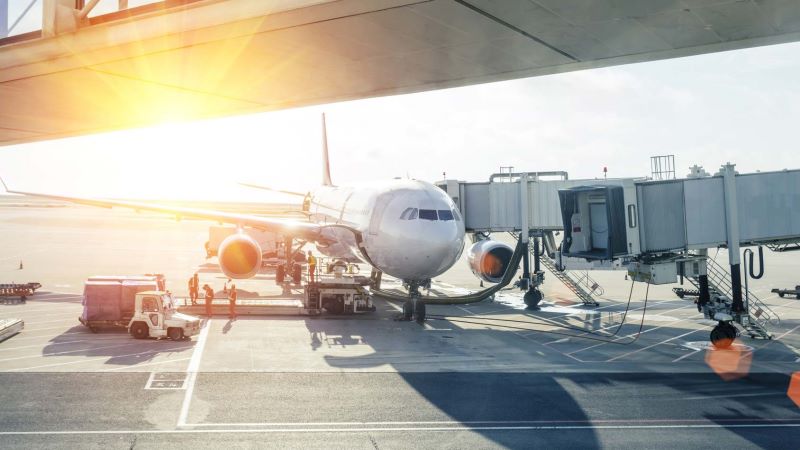Sustainable aviation fuels – the answer to the sector’s decarbonisation challenge?
A more sustainable world. A return to the skies. Two phrases that seem at odds, but what people want. And so, the aviation sector, often lambasted for its carbon impact, must respond to the public mandate and offer a solution that is far from a return to ‘normal’.
Decarbonisation can, of course, be tackled in a number of ways, and airports and airlines must take a holistic approach to achieving the reductions needed. One area of particular promise, however, is sustainable aviation fuels (SAF). In the absence of commercially viable zero emissions electric aircraft, SAF present the best opportunity for driving decarbonisation in the sector.
Mace is working with airport operators, government agencies, electricity providers, and engineers in the chemical production sector to help better understand the viability of SAF and encourage their wider uptake. Here, Carl Dainter, Mace’s Director for Global Aviation Consultancy, explores what this means in reality.
A sustainable solution?
The figures are promising. Data suggests that SAF can help to reduce CO2 by up to 70% across the fuel lifecycle and aid a 90% reduction in particulates. What’s more, they can be mixed with standard aviation fuels, allowing for a quick initial rollout due to compatibility with existing fuelling infrastructure and aircraft.
That all sounds pretty positive. But there is a catch. Compared to traditional jet fuel, the amount of energy required to produce SAF makes it considerably more expensive at the moment. SAF costs are expected to fall, while conventional jet fuel is set to become more expensive, but it could be a decade before we see parity. At these figures, demand and, therefore, production, will limit potential.
So, are SAF really the answer to the aviation sector’s decarbonisation challenge?
Put bluntly, they have to be. Typically formed through the synthesis of biomass or biofuels, such as waste oil, wood chippings and agricultural waste – and with CO2 and hydrogen also gaining prominence as a feedstock – SAF have the potential to cater for at least 30% of the net zero carbon target the UK aviation sector has committed to by 2050.
The next question, then, is how can these fuels become more viable in the short, medium and long term?
Unlocking potential through collaboration
As is so often the case, collaboration is the key to success. An increase in SAF production and a decrease in SAF costs cannot be achieved by the aviation industry alone.
At the moment the existing level of commercial production of SAF in the EU is around 0.05% of the total EU jet fuel consumption; far lower than what is required for SAF to be deployed at scale. In fact, to meet the net-zero emissions target by 2050, global SAF demand projections will need to scale up by 400%.
Political backing is vital. The EU Commission is pushing for SAF to account for 40% of low-carbon alternative fuels in the sector by 2050 – a considerable increase from the current 4% – while, with the support of a UK government grant, the International Airlines Group and Velocys are developing a waste-to-fuel plant in Immingham to produce SAF on a commercial-scale. If governments around the world are truly committed to a more sustainable future, they must engage the aviation sector and provide assistance through mechanisms such as guaranteed price floors, which stop prices from getting too low and de-risk investment, alongside mandated and ambitious national decarbonisation targets.
The fuel production industry needs to step up too. This means alignment with the decarbonisation aspirations of the aviation sector and a willingness to innovate and find ways to produce SAF in a more commercially viable way. There are examples of initiatives working to address this challenge, such as in the Netherlands, where Shell is supporting SkyNRG to develop Europe’s first sustainable aviation fuel plant. Shell will have the opportunity to purchase the SAF produced and take it to the market. It’s an example of the mutual collaboration that will drive things in the right direction.
Another way to help reduce costs is through co-location of SAF manufacturing plants and low-cost renewable energy generation facilities is one solution. Locating these sites in close proximity is beneficial for the energy intensive process of creating SAF, helping to make it more sustainable in its own right. This concept needs a robust programme management approach to ensure effective delivery of the independent but linked infrastructure assets, but the principle of this type of co-location is tried and tested. What’s more, examples of the process being made quicker, easier and cheaper are only going to raise awareness and increase demand for SAF.
Leading by example
Demand is, fundamentally, where the aviation sector plays its biggest role. Airlines will have to grapple with competitive commercial pressures, although mustn’t be let off the hook. It is the airports that can take a leading role in driving change. Through the proactive rollout of new refuelling infrastructure and SAF supply lines, airports will mark their intentions and airlines will have to respond. This will provide a boost across the supply chain, encouraging investment and innovation, which in turn will continue to reduce costs and improve SAF.
Longer term, an airport with a comprehensive SAF infrastructure network will be more attractive to airlines and passengers, certainly in comparison to those who lag behind.
And so, uptake of SAF within airports isn’t just a route to decarbonisation – which is the top priority and offers a host of environmental benefits – but also about future proofing the infrastructure and positioning the aviation sector as a catalyst for wider positive change.
















